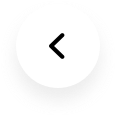Italy
My artistic research has focused on the relationship between the human and nature, travel and exploration as knowledge-based experiences.
Walking and experiencing and in-depth knowledge of sites are focal aspects of my research.
My interests encompass different disciplines, from natural science, such as ethnology and geology, to geography, cartography, literature, poetry.
I tend to engage in high-importance projects, evoking, in my work, dilated rhythems of nature and short rhythms of human existence: from educational processes to cognitive processes, to the transformations of lichens, glaciers, geologic maps, the micro and the macro, both based, after all ,on the very same structure.
My recurrent use of embrodery and sewing has to be regarded as an attempt to transpose the slow times of nature and of relational processes, and as metaphors for the tangle of relationships, stories and different cultural sensibility and specificity; but also for the “repair” of what history has broken. Hence my work blends ecological concerns and social considerations and the nature, source and food for thoughts, becomes a boost to start an awareness process with respecto to our relationship with natural and social environment and with the rules underlying the same.
I have carried out a number of projects based on participation and relationship: projects, centered around objects acting as catalysts of energies, experiences, memories, that have turned into collective operations.
——Claudia Losi
Claudia Losi always has several projects on her hands at the same time. From 2004 to 2010, Claudia Losi finished her project “Balena Project” with volunteers – the creation of a soft reproduction in actual size of the biggest and swiftest cetacean in the Mediterranean., the Balaenoptera Physalus, also called fin whale. It’s 24 meters long and 4 meters in width.
A great story related by several friends and, then, by a Swiss man, Jean Rezzonico, who travelled with it between 1950-1970. It is about a real whale somewhere in the which toured the piazzas of Italy and Europe as a macabre circus attraction. Held in a container of over 22 meters long, a strange image that attracted numerous visitors. Many children accompanied by parents who still remember its enormous eyes staring into the void. Later it was bought by a Spanish circus. (In 2015, Fiona Tan, a Dutch artist, held his one-person exhibition “Deport” with this whale as its theme.)
Claudia did not expect that from an initial idea, as yet imprecise in its details, would develop so many different relationships, stories, events, some extraordinary.
But later many people offered me help. Some offered me the fabric to realize this whale, the place and the technical knowledge to sew it. Marine animals activists offered their time to tell stories about it, through images and documents. Some offered help through labor work—sewing and knitting. Some spent words, connected the threads to create a tapestry of possibilities and make them go far. [N3] The necessity to construct a tale that carried with it an affirmation of meaning: the image of a great beached animal – one that is truly in danger of becoming extinct – appears in places that one would not expect to see it. Like it did in 1960s, it becomes an instrument, and people came to see it and participate in this program.
As soon as it was completed the whale began a journey, a long itinerary through different places and situations. It has traveled many countries. At times it has been beached in a museum or a gallery room, on the seaside, along a riverbank, in an historic square. It would have liked to rest alongside a glacier, in a suburban neighborhood, in the courtyard of a school.
What to do with such a big whale after the exhibitons became a problem. Two years ago, Claudia decided to make many different little creations out of of the giant whale.
Some of the whale was turned into jackets. Claudia gave these jackets to different persons and asked them to create different artworks using these jackets, and then send it back to her. Some was turned into materials used in children’s workshop in Birmingham and Rome. Children could paint whatever they thought a whale should be, and local clothing colleges or tailors would cooperate to turn these paintings into real products. Efforts were also made to discuss the co-existence and close relationships between different animals. These materials can be recycled and used in future projects.
Claudia said this is about not giving up on a single thread of fabrics, and not letting go of a single idea and thought.












